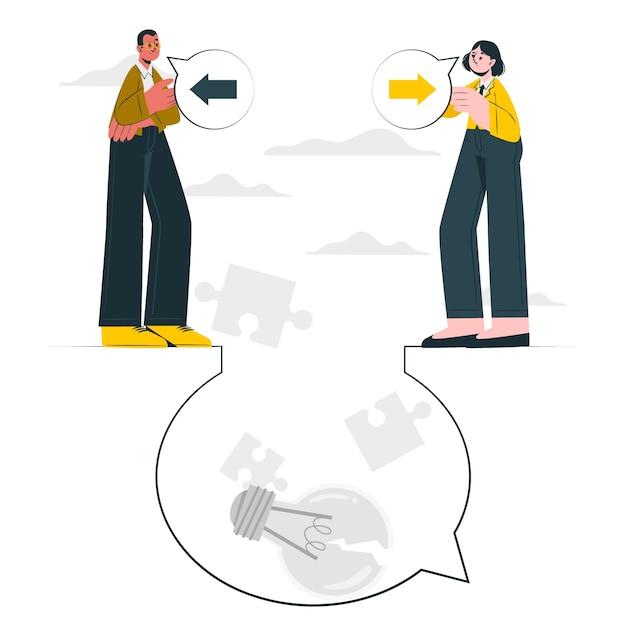In this hyper-connected world, communication plays a vital role in our daily lives. Whether we’re engaging in casual conversations or conveying important messages, effective communication is key. But have you ever wondered about the various types of communication? Specifically, what sets apart one-way communication from two-way communication?
In this blog post, we will dive into the nuances of one-way and two-way communication, exploring their definitions, characteristics, and examples. By the end, you’ll have a clear understanding of how these communication styles differ and when each is most appropriate. So, let’s embark on this informative journey and unravel the complexities of communication!

What is the Difference between One Way and Two Way Communication?
In the world of communication, there are two main types: one way and two way. Let’s dive in and explore the quirky differences between these two forms of exchange.
The Solo Act: One Way Communication
One way communication is like a monologue without interruptions. It’s like having a passionate conversation with a wall – you pour your heart out, but don’t expect any response. It’s a bit like talking to your pet turtle, who just blinks back at you, unimpressed.
In one way communication, information flows in a single direction, from the sender to the recipient. It’s like firing an arrow into the abyss, hoping it reaches its target. Or putting a message in a bottle and hoping it doesn’t end up in some forgotten corner of the ocean.
The Dynamic Duo: Two Way Communication
Ah, two way communication, where the magic truly happens. It’s like a lively game of ping pong, where words bounce back and forth, creating a rhythm of understanding. It’s a dance where both parties willingly participate, taking turns to lead and follow.
Unlike its one way counterpart, two way communication is a dialogue – an exchange of ideas, thoughts, and emotions. It’s a conversation where active listening and response are key ingredients. It’s the difference between talking at someone and having an engaging discussion.
The Power Play: Pros and Cons
Just like superheroes battling it out for dominance, one way and two way communication have their strengths and weaknesses. Let’s weigh the scales of communication justice, shall we?
One Way Communication Pros:
- Efficiency: When time is of the essence, one way communication gets the job done quickly.
- Clarity: One way communication provides a clear message without distractions or interruptions.
One Way Communication Cons:
- Lack of Engagement: Without feedback or interaction, the process can leave the recipient feeling disconnected.
- Misinterpretation: The absence of a response may lead to misinterpretation or misunderstanding.
Two Way Communication Pros:
- Collaboration: Two way communication encourages collaboration and sparks creativity through active involvement.
- Understanding: By actively listening and responding, two way communication fosters mutual understanding and empathy.
Two Way Communication Cons:
- Time-Consuming: Engaging in two way communication can be more time-consuming due to the back-and-forth nature of the dialogue.
- Potential Conflicts: In a two way exchange, differing opinions may sometimes lead to conflicts or misunderstandings.
Communication is like a dance; it takes two to tango. Whether you prefer the simplicity of one way communication or the dynamic interplay of two way communication, understanding the differences allows you to adapt and utilize the appropriate form in various situations. So, next time you give a speech or engage in a conversation, remember the subtle yet significant contrasts between these two communication styles.

FAQ: What is the Difference Between One-Way and Two-Way Communication?
What is a One-Way Communication
One-way communication is like a monologue where the information flows in a single direction, kind of like a traffic jam where only one car gets to honk its horn. It’s when someone is talking at you without expecting or even wanting a response. You’re just there, nodding or shaking your head, trying to stay awake while they keep blabbering on.
Which Barrier to Communication is Not Involved in One-Way Communication
Well, let me break it down for you. One-way communication is a master at avoiding any chance of dialogue, which means it skillfully sidesteps the barrier of feedback. Yep, in this lopsided dance, nobody wants to hear your thoughts, ideas, or even your favorite recipe for peanut butter brownies. It’s a lonely road where your voice is silenced, much like when you lose your cell signal in the middle of nowhere.
What Makes Communication a Two-Way Process and When Does it Become One-Way
Ah, the beauty of two-way communication! It’s like a lively conversation where both parties get to contribute and exchange ideas. It’s the true spirit of “talk to me, I’ll talk back!” But here’s the catch: communication becomes one-way when someone decides they’re too cool for a dialogue. It’s as if they put a giant “Do Not Disturb” sign on their forehead, saying, “I’m done listening, thank you very much. Carry on without me.”
Can You Share an Example of One-Way Communication
Sure thing! Imagine you’re attending a mind-numbingly boring lecture on the history of lint. The professor drones on and on about the various types of lint throughout the ages, completely oblivious to the collective snore fest happening in the audience. You’re stuck there, unable to escape, silently praying for the sweet release of a fire alarm. That, my friend, is the epitome of one-way communication.
And there you have it! The lowdown on the fascinating differences between one-way and two-way communication. Now, you can impress your friends at parties with your newfound knowledge. Just remember, communication is a beautiful dance, so let’s all strive for more two-way conversations and fewer monologues. After all, who wants to be the lonely driver stuck in traffic with no one to honk back?
